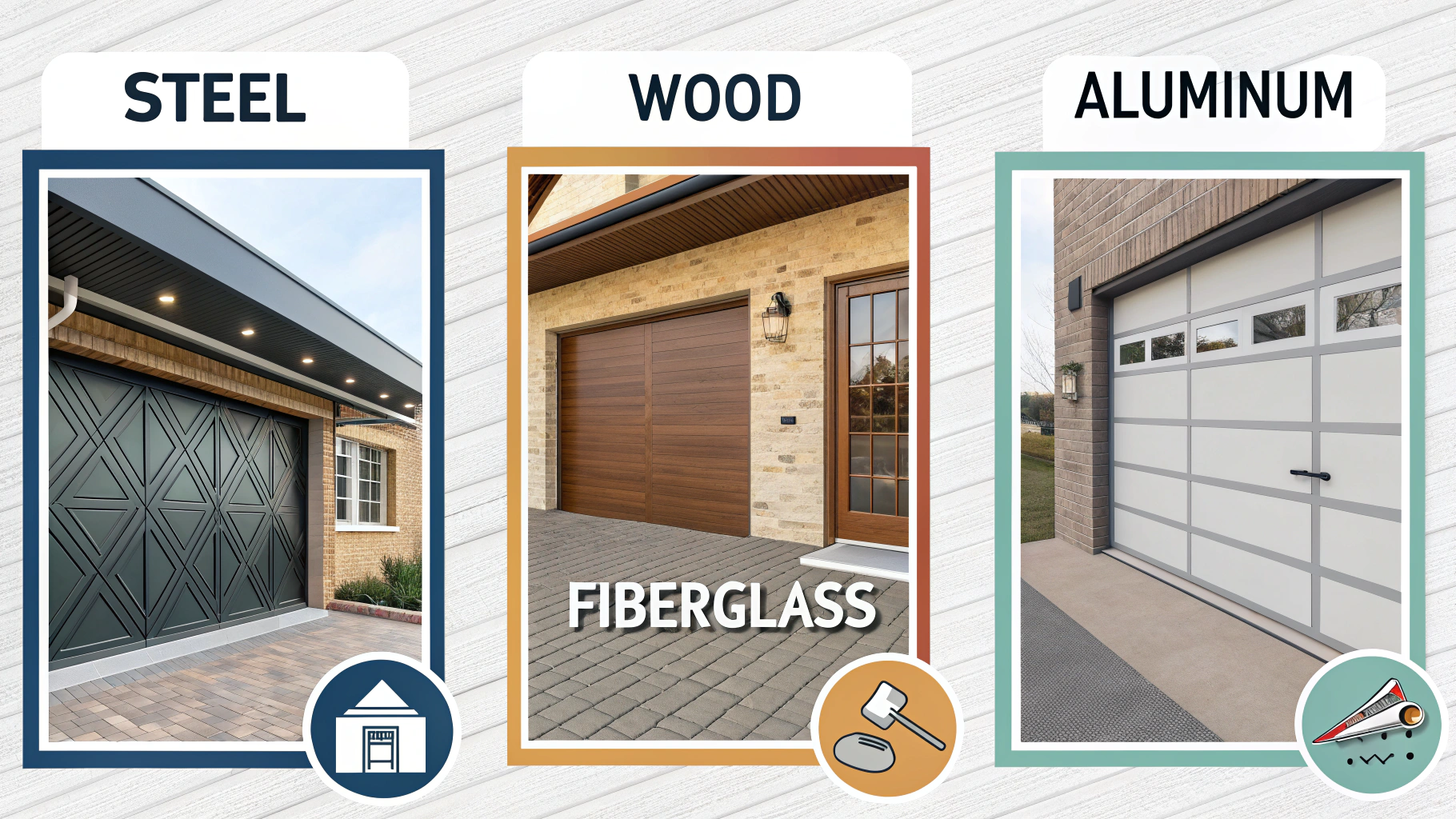Your garage door does more than shield your car—it defends against the elements, deters thieves, and silently judges your home’s aesthetic choices. Balancing style, durability, and garage door prices doesn’t have to be a headache. Let’s break down materials, installation tricks, and hidden costs so you can upgrade confidently.
1. Material and Style Guide: Matching Panels to Your Home’s Needs
Your climate and design taste dictate the best material. Here’s how top options stack up in 2025:
Steel ($150–$400 per panel)
The MVP for Midwest winters and Southwest sun. Dual-layer steel panels resist dents, while polyester coatings fend off rust. Just ask Tom from Ohio, who replaced his warped wood doors with steel last winter:
“No more annual paint battles, and my heating bill dropped 12%.
Wood ($200–$700 per panel)
Mahogany and cedar offer timeless charm but demand commitment—like owning a vintage car. Sarah in Coastal Maine swears by her stained spruce panels:
“I budget $200 yearly for resealing, but the compliments are worth it.”
Aluminum ($200–$400 per panel)
Coastal homeowners’ secret weapon. Lightweight and rust-resistant (thanks to oxide layers that repel salt air), these pair beautifully with tempered glass inserts.
Pro Tip: V-groove designs (those V-shaped channels) add rustic texture to vinyl or wood, while flush panels keep modern homes looking sharp.
2. Garage Door Prices Decoded: Where Your Money Goes
A single panel replacement averages $860 nationally, but costs pivot on three factors:
Material
- Steel: $150–$400
- Insulated steel: +$100–$300
- Wood: $200–700 (add $50/sq.ft for custom carvings)
Labor
Pros charge $75–$150/hour. Complex jobs spike fees—like retrofitting 1990s doors with smart openers.Hidden Extras
Disposal fees: $50–$150
Hurricane straps (Florida/West Coast): +$200

3. Smart Shopping: Where to Buy Without Regrets
Skip buyer’s remorse with these proven sources:
Retailers
- Home Depot®/Lowe’s®: Clopay’s Canyon Ridge steel doors start at $1,200 installed.
- Local Dealers: Raynor’s authorized partners measure your door, handle permits, and back installations with 25-year warranties.
DIY Havens
Manufacturer Sites: Amarr’s online designer lets you “try on” doors using your home’s photo.
Overstock: Scratch-and-dent steel panels sell for 40% off at GarageDoorOverstock.com.

4. DIY Garage Door Panels: When to Save vs. Splurge
Worth It:
- Magnetic faux-wood veneers ($25/panel) refresh tired doors in 30 minutes.
(NO tools needed—just peel, stick, and impress the neighbors.)
Skip It:
- Full panel replacements involving torsion springs. Mike from Texas learned the hard way:
“The spring snapped mid-install, put a hole in my SUV.”
Budget Build:
Stressed-skin wood panels (plywood sheets over pine frames) cost $450 for a double door. Requires a circular saw and patience.
5. Installation: DIY Basics vs. Pro Must-Knows
| Scenario | DIY-Friendly? | Pro-Recommended? |
|---|---|---|
| Single panel swap | Yes | No |
| Full track overhaul | No | Yes |
| Adding insulation | Maybe | Yes |
*Insulation kits need precise cuts—messy gaps slash R-values.

Spring Warning: Garage door springs hold 200+ lbs of tension. One Florida ER doctor reports:
“We see 3 DIY spring injuries monthly.”
6. Long-Term Costs: Durability vs. Wallet Drain
Vinyl: Survives hailstorms but warps at 120°F+ (looking at you, Phoenix).
Fiberglass: Crack-prone below freezing—great for Miami, not Minneapolis.
Steel: Lasts 30+ years with a $50 annual wax coat.
7. Timing Your Purchase: Seasonal Price Hacks
Buy in January: Retailers discount 15% to combat post-holiday sales slumps.
Avoid May-June: Peak season spikes garage door prices 20%.

Whether you’re revamping a midcentury gem or shielding a suburban SUV cave, smart choices now prevent budget meltdowns later. Ready-built steel maximizes savings, while wood whispers “I have a landscaper.” Choose wisely, measure twice, and let your door boost curb appeal—not repair bills.
Backed by 2025 data from Clopay®, Raynor®, and National Home Improvement Association

